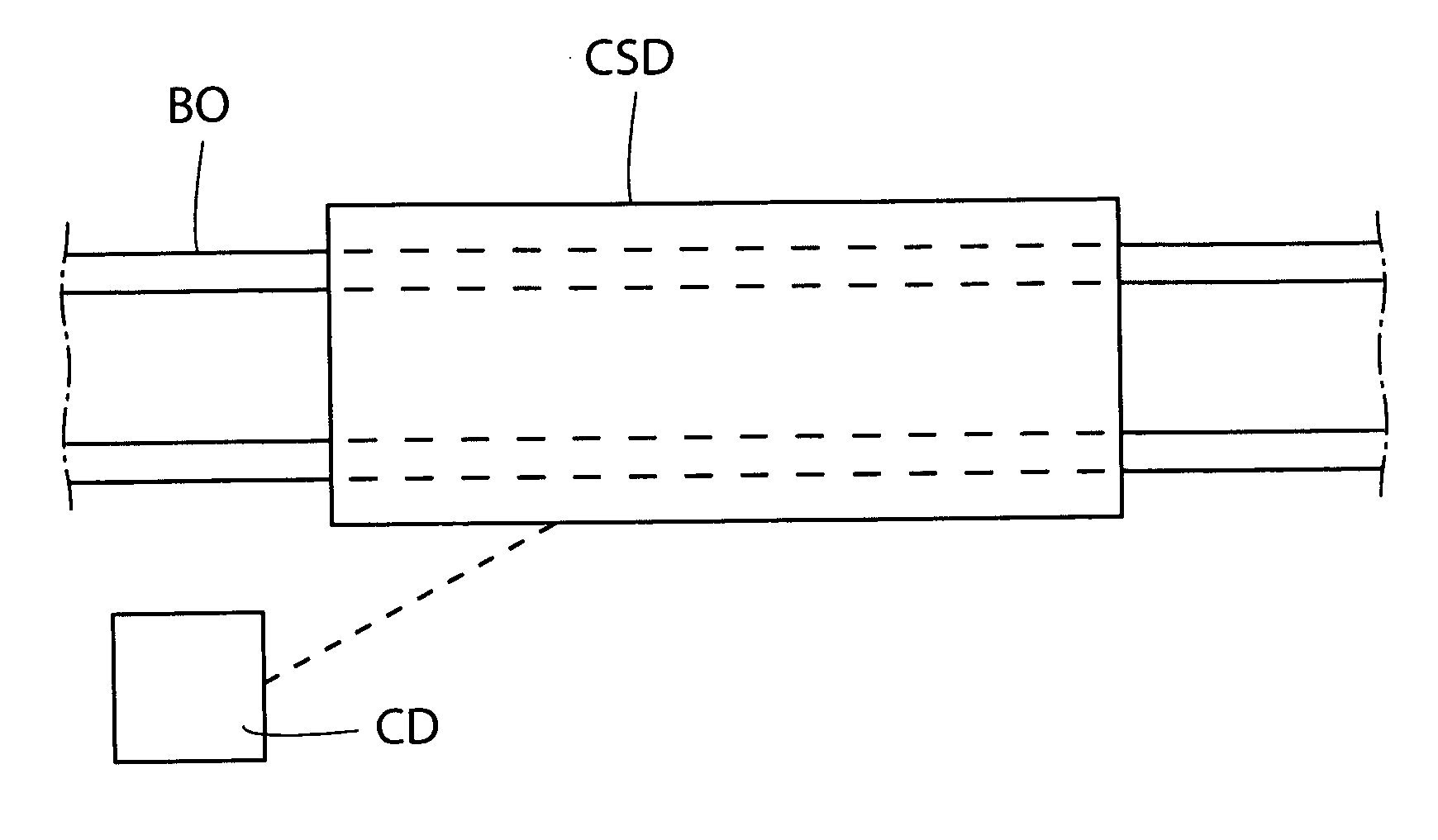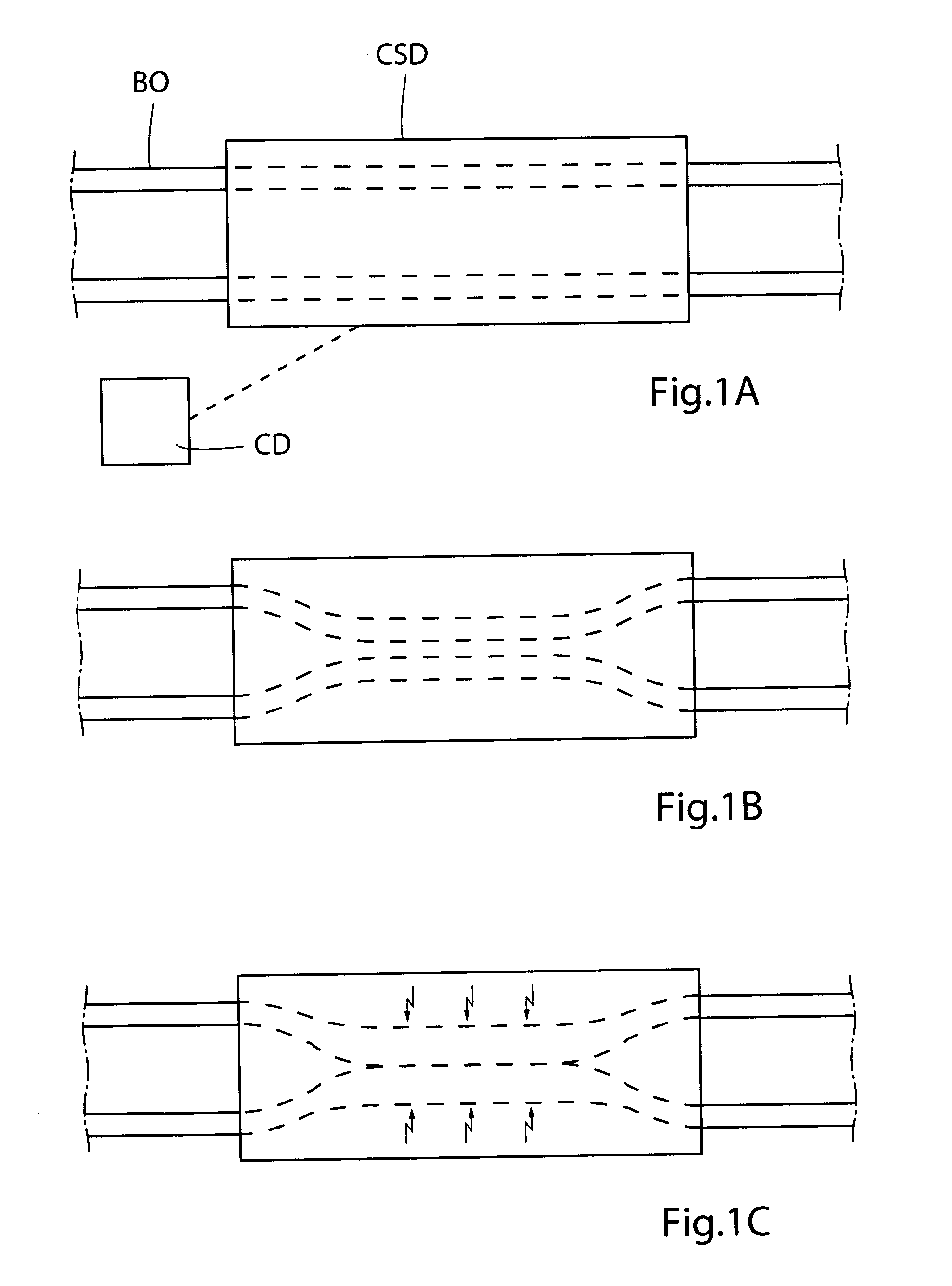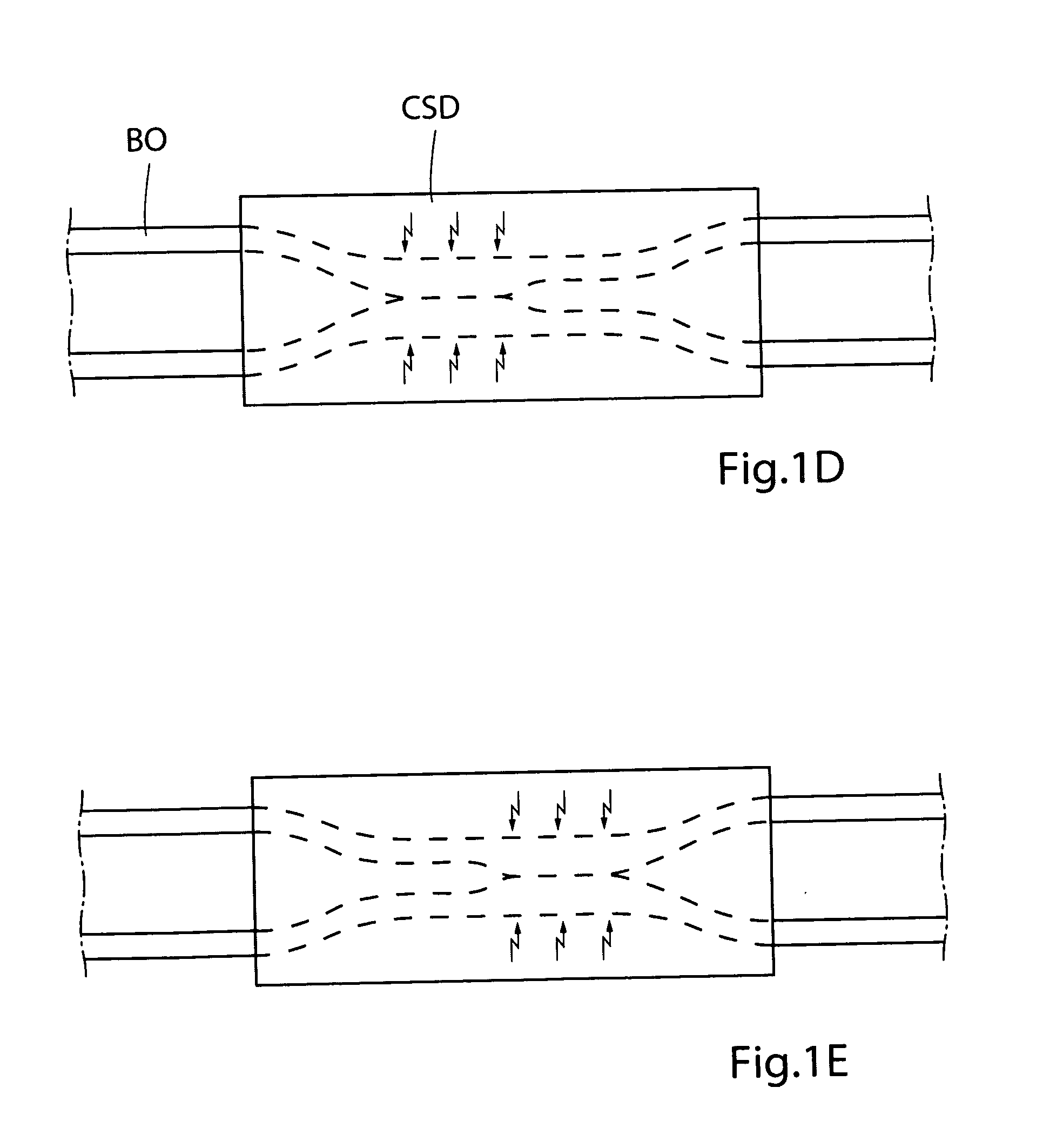Method for controlling flow of intestinal contents in a patient's intestines
a technology for controlling the flow of intestinal contents in the intestine of patients, which is applied in the field of controlling the flow of intestinal contents in the intestinal passageway, can solve the problems of uncontrollable drainage of fecal matter through the anusintestinal passageway, system useless sooner or later, and always entails a risk of fluid leaking from the implanted hydraulic system
- Summary
- Abstract
- Description
- Claims
- Application Information
AI Technical Summary
Benefits of technology
Problems solved by technology
Method used
Image
Examples
Embodiment Construction
[0299]Referring to the drawing figures, like reference numerals designate identical or corresponding elements throughout the several figures.
[0300]FIGS. 1A, 1B and 1C schematically illustrate different states of operation of a generally designed apparatus used for practicing the method of the present invention, when the apparatus is applied on a wall portion of a patient's intestines designated BO. The apparatus includes a constriction device and a stimulation device, which are designated CSD, and a control device designated CD for controlling the constriction and stimulation devices CSD. FIG. 1A shows the apparatus in an inactivation state, in which the constriction device does not constrict the intestines BO and the stimulation device does not stimulate the intestines BO. FIG. 1B shows the apparatus in a constriction state, in which the control device CD controls the constriction device to gently constrict the wall portion of the intestines BO to a constricted state, in which the ...
PUM
 Login to View More
Login to View More Abstract
Description
Claims
Application Information
 Login to View More
Login to View More - R&D
- Intellectual Property
- Life Sciences
- Materials
- Tech Scout
- Unparalleled Data Quality
- Higher Quality Content
- 60% Fewer Hallucinations
Browse by: Latest US Patents, China's latest patents, Technical Efficacy Thesaurus, Application Domain, Technology Topic, Popular Technical Reports.
© 2025 PatSnap. All rights reserved.Legal|Privacy policy|Modern Slavery Act Transparency Statement|Sitemap|About US| Contact US: help@patsnap.com



